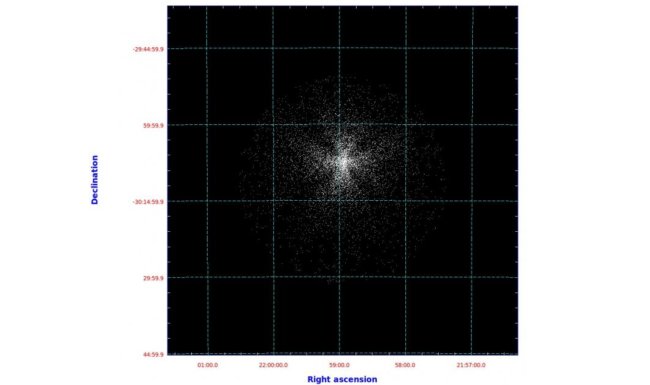
AsianScientist (Nov. 11, 2016) – India’s GRAPES-3 muon telescope, the largest and most sensitive cosmic ray monitor operating on Earth, has recorded a burst of galactic cosmic rays entering the Earth’s magnetosphere that indicate a ‘crack’ in Earth’s magnetic shield. This work was published in Physical Review Letters.
The Earth’s magnetosphere extends over a radius of a million kilometers, shielding us from the continuous flow of solar and galactic cosmic rays and thus protecting life on our planet from these high-intensity energetic radiations.
The burst occurred when a giant cloud of plasma was ejected from the solar corona and struck our planet at the speed of about 2.5 million kilometers per hour. It caused a severe compression of Earth’s magnetosphere from 11 to 4 times the radius of Earth, triggering a severe geomagnetic storm that generated aurora borealis, and radio signal blackouts in many high latitude countries.
The Earth’s magnetic field bent these cosmic ray particles about 180 degrees from the day-side to the night-side of the Earth, where it was detected by the GRAPES-3 telescope at Tata Institute of Fundamental Research’s Cosmic Ray Laboratory in Ooty, India, around midnight on June 22, 2015.
Based on extensive simulation studies over several weeks at the Cosmic Ray Laboratory, the GRAPES-3 collaboration’s findings indicate that the Earth’s magnetic shield temporarily cracked due to the occurrence of magnetic reconnection, allowing lower energy galactic cosmic ray particles to enter our atmosphere.
The article can be found at: Mohanty et al. (2016) Transient Weakening of Earth’s Magnetic Shield Probed by a Cosmic Ray Burst.
———
Source: Tata Institute of Fundamental Research; Photo: Pixabay.
Disclaimer: This article does not necessarily reflect the views of AsianScientist or its staff.












